On-demand economy has changed the way people perceive many things today, including travel and hospitality. That’s one of the reasons why companies like Airbnb get billion-dollar valuations in less than five years. Or why apps like Airbnb are in great demand worldwide.
If you’re reading this, you have probably considered enhancing your business with a mobile application of this sort. Or perhaps, following Airbnb’s business model to start up an enterprise. So read on to discover shortcuts to building an app like Airbnb.
Here’s the plan:
What is Airbnb
Airbnb is a travel app designed for apartment rental opportunities all over the world. Airbnb provides a tempting solution for owners of property and people seeking short-term accommodation. It’s a digital platform serving as a marketplace and interactive environment for ‘hosts’, people who earn by letting out their property to ‘guests’, who, in their turn, are seeking to enhance their round-the-globe experiences by booking non-expensive hosted accommodation and having an opportunity to interact with locals. The platform operates in over 190 countries worldwide.
According to the latest stats, the company now has:
- 100 million users
- 640,000 hosts
- 2,3 million listings
- 500,000 guests stay per night via Airbnb
- 10 billion miles of travel to Airbnb destinations
- 191 countries and 65,000 cities actively involved in Airbnb
- estimated revenue around $900 million
Airbnb business model canvas
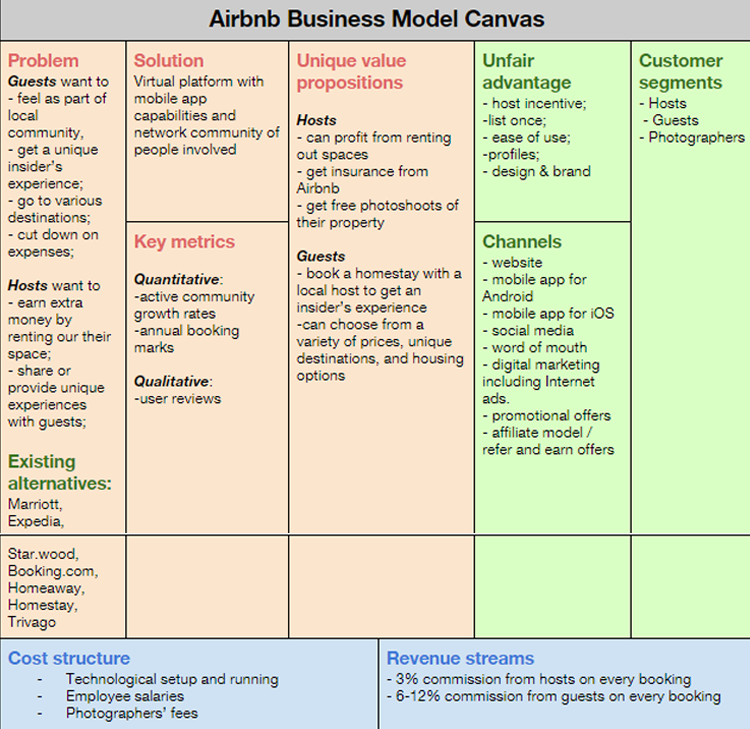
Problem
Airbnb sees a problem stemming from today’s state of economy and a new philosophy of life. People who want to travel extensively to different destinations face these hurdles:
- price becomes an obstacle
- hotels leave you disconnected from the city and its culture
- no easy way exists to book a room with a local or become a host
People want a unique hospitality experience and are willing to share it with locals, make friends, build relationships and more.
Solution
Hosting option, enhanced by digital networking experiences, is a niche model of cooperation between travellers and locals. The famous pitch by Airbnb goes, ‘Hosts define the Airbnb experience, but there are people who are always on the go. Our goal is to make hosting as easy as possible through incredible mobile experiences, world-class hospitality initiatives, and new ways for hosts to connect directly with each other.’
Existing alternatives
There are a number of alternative service providers, both giant hospitality companies as Marriott, Expedia and Star.wood as well as newer digital providers, like Flipkey, TripAdvisor and others. Among the top competition, are a few hosting companies, rating high in user reviews:
- Booking.com – the largest accommodation booking site in the world with traveller-friendly cancellation policies and instantly bookable inventory and intuitive UI.
- HomeAway – the biggest vacation rental services provider with over 1,000,000 apartments, cabins and cottages. It has worldwide inventory and runs numerous brands including: VRBO, Travelmob (Asia), Bookabach (New Zealand), FeWo-direkt (Germany), Homelidays (France), OwnersDirect (UK) and others.
- Homestay – its business is built around hosted housing, that is accommodation with a host, similarly to Airbnb, with a bias towards Couchsurfing: the pricing is very low and it is more typically a shared room.
- Trivago – has a surprisingly good selection of serviced apartments, vacation homes, hostels and bed and breakfasts. The site is popular due to a wide range of inventory and ease of use. Unlike Airbnb, provides accommodations without hosts.
Unique value proposition
Hosts
- can profit from renting out spaces
- get insurance from Airbnb
- get free photo shoots of their property
Guests
- book a homestay with a local host to get an insider’s experience
- can choose from a variety of prices, unique destinations, and housing options
Airbnb
- provides insurance to listed properties
- facilitates the process of booking living space for travellers
- provides rating and review system for hosts and guests
Unfair advantage
The truth is, unfair advantage does not always work and it’s better to be a runner-up in business than to be the first. Airbnb originally was positioning itself as the first ‘air mattress rental company’, but it ended up better off following a more traditional path. Now the users benefit from having a network. The company provides additional services for hosts (free photo shoots, insurance, review and rating system). At the same time, it builds up trust by offering better user experience for all participants.
Channels
For Airbnb, customers are people who contribute to the company’s revenue. These are the key participants of the business model – the hosts and guests – who pay commission whenever booking takes place. So how does the company find these clients? Presently Airbnb has a website and mobile presence via mobile apps for Android and iOS. It has built up web presence by organizing special events, via partnerships and listings. Over the course of development, it has used these 5 channels as ways of attracting audience:
- social media
- word of mouth
- digital marketing, including paid advertisement
- promotional offers
- affiliate model / refer-and-earn offers
Customer segments
Hosts
- Hosts are the people who own property and want to make some money by renting out their available space.
- They can create a listing for their property on AIrbnb, add property details and set their own rent, check-in, check-out time etc.
- Hosts can accept or reject a booking after reading the reviews of the traveller or after going through his social profiles.
Guests
- Guests are the people who book the listed available spaces from local hosts.
- Guests have the option to search for a property by filtering them according to rent, facilities, location etc.
- Guests can book a space by paying through the Airbnb portal.
Freelance Photographers
- Airbnb has a vast network of freelance photographers in all major cities of the world who go to a location and click high-definition photographs of the property.
- The high-quality photographs get more responses and the freelance photographers are paid by Airbnb directly.
Cost structure
The regular list of the company’s expenditures includes:
- technological setup and running
- employee salaries
- photographers’ fees
Revenue streams
Airbnb offers property listings free of charge to view by travelers or add to by owners. It gets its share from the booking and monetary transactions that are done on Airbnb’s platform. The 2 revenue sources are these:
- each proprietor pays 3%;
- every tenant – from 6% to 12%;
It is really a favorable situation for everyone because the service deducts its share only when the payment is obtained by homeowners, and they, in turn, are paid only when renters are satisfied. This is a clear example of the win-win strategy: those who think of others first, profit.
Initially the company allowed property owners to set the price, but this didn’t work well and the company started losing clients. Presently, the price is set automatically. The app uses a unique open-source machine learning package, called Aerosolve, to give accurate estimates of the best price in every area at any time. The AI predicts the demand by considering a hierarchy of factors, such as seasonality, unique features of a listing and price rates.
Here’s a case study to learn how CodeTiburon implemented the Airbnb business model in a custom mobile app: Space-sharing Mobile App: Just Right for On-the-spot Rentals
Who may be interested in an Airbnb app clone
To understand whether your business needs an app like Airbnb, let’s first look at the way users can interact with it and then at the capabilities of Airbnb alternatives.
Airbnb app’s interaction design
At the basis of a property rental app, there’s a 5-step model of interaction:
- HOSTS list out their property details via AIRBNB app along with description of facilities, location etc.
- AIRBNB sends a professional PHOTOGRAPHER (if available) to the property location in order to take high-quality photographs.
- GUESTS search for accommodation in the city where they wish to stay and browse available options according to price, amenities etc.
- Bookings are made through AIRBNB where a GUEST pays the amount mentioned by HOST plus commission.
- HOST approves the booking. GUEST stays there and finally AIRBNB pays the amount to the HOST after deducting their commission.
Apart from this, the app’s users can also:
- manage the listing directly from the mobile app
- get acquainted with potential hosts/guests before their arrival
- accept, decline, pre-approve, and send special offers to guests ‘on-the-go’
- manage inquiries, check off ‘to-do’s’ and respond to messages from the host home
- view the ‘hospitality standards’, to provide the best cross-cultural experience
- update the ‘calendar availability’
- access ‘groups’ to connect with your host community
- and more
Does the model fit my business?
Not sure whether it’s worth going into the same business as a unicorn like Airbnb? Consider this: according to AirDNA, a quarter of all bookings of the Airbnb are held inside the United States, which means the niche in other countries is still free. Among other things, the service is very popular in large cities, bypassing the smaller ones. So local startups have a good chance of success.
Taken on a larger scale, Airbnb successfully adopts a sharing (or peer-to-peer) economy business model – individuals sharing human and physical resources.
The four pillars of sharing economy are:
- digital platforms that connect spare capacity and demand
- transactions that offer access over ownership
- more collaborative forms of consumption
- branded experiences that drive emotional connection
From this perspective, Airbnb is NOT a pioneer of sharing economy. Popular companies like eBay and Craigslist have taken advantage of the model for over 10 years.
Companies in the sharing economy don’t provide individuals directly with goods and services. They make their money by connecting buyers and sellers. And that, in its turn, provides a potential for continued revenue growth. So despite the headline-grabbing success of Airbnb, the same business model is widely used by other industries. Consider examples below.
Travel and Hospitality
Apart from all sorts of rental solutions for travellers, plenty of apps will provide petcare aid while you’re away. Among the best pet sitter apps are Rover, Pet Nanny, DogVacay and others. Have an appetite for unique travelling experiences? Share a meal with a local – a meal-sharing app like Feastly, EatWith, or Cookapp provides this lifetime opportunity.
Real Estate
Given the short apartment hunt time periods, mobile apps come in handy, allowing users to browse listings whenever it’s convenient – from standing in line at the store to watching TV in the evening. As the demand for real-time apartment listing information grows, rental apps are racing to provide better services that make life easier for renters. Among the most popular rental apps today are: Zillow Rentals, Trulia Rentals, realtor.com, Zumper and others.
Automotive and Transportation
Zipcar, Turo, Car2Go, Lyft, Uber – to name but a few – are automotive companies making use of mobile apps. The sharing economy is quickly paving new roads in the automotive industry, establishing a web of transportation options. Hitchhiking, it seems, is back – in one form or another. Having a mobile app is a winning strategy with automotive business.
M-commerce
Heavy competition and constant disruption force commercial enterprises to keep abreast of technological developments. On the one hand, large digital marketplaces are pushing back their limits, on the other, SME’s are seeking lean ways of using technology for unique UX solutions. Mobile apps provide an easy access to local and global product/service trade. Two of the expected upgrades in e-commerce – the additions of home delivery (HD) and click-and-collect (CnC) services – both call for mobile applications.
How much does it cost to build an app like Airbnb
The cost of development depends on many factors:
- A team’s size and location
- The number of platforms to build an app for (iOS, Android, cross platform)
- Functionality set and technical complexity of features
- Technology stack
- Degree if design customization
- Architecture solutions and more
It’s not a problem to find rough estimates of Airbnb app development costs on the net. There are live discussions on Quora, Youtube and other reputable sources. Just enough to give you a general idea of what to expect.
However, they fail to go in-depth into questions like:
- What’s a minimal development team for the project?
- How to setup the process?
- Which feature do I need first place and why?
- How long will it take?
- What’s the pricing policy?
- How can I reduce the development costs?
Here’s our idea of how an app like that will be built. The project has three main steps: pre-development stage (determining the team, business logic, app architecture, process setup), development (design, mobile client, backend) and stabilization. Let’s assume we’re developing an app for one platform only, say, iOS.
#1 The team
A minimum team will include:
- 1 UI designer
- 1 iOS developer
- 1 backend developer
- 1 project manager
- 1 QA engineer
#2 The app architecture
Next, we determine the app architecture. That includes:
- Project setup
- REST API implementation
- Database model
- Implementation of services and libraries
#3 Development effort estimation
The average cost of mobile development in Eastern Europe is $35 per hour. In our rough estimate of the project duration and cost we included three options of functionality by arranging the features in the order of priority – from the most to the least valuable for a property rental business.
Out of various prioritization techniques, we’ve used the MoCSoW method that sorts the features into:
- ‘Must-haves’ – features with the most of business value, absolute necessity to build since they make up a minimum viable product
- ‘Should-haves’ – features that will most likely enhance user experience, but are not vital at the start
- ‘Could-haves’ – those may add to your competitive advantage
- ‘Won’t-haves’ – will be an unnecessary waste of resources
This gives an idea of the functionality and budget to start with and what to follow with.
‘Must-haves’
At the very least, you want your users to have their own profiles to log into and be able to:
- Post an ad with property description
- Search for property and view pictures and descriptions
- Book properties and contact or notify the host in any manner
So the vital features will be:
- Login and registration – to verify a user’s identity
- User profile/Edit user profile – the necessary information about a user and ability to manage it
- Search property/Property listings/Search filters – that’s the ‘Guest’ mode that includes the core searching and booking functionality
- Property on the map – allows for localization
- Property details/Rent out property/My ads – the ‘Host’ mode, containing advertising capabilities
The hours for ‘must-have’ features add up like this:
- UI design – 220-350 hrs
- Mobile development – 340-480 hrs
- Backend development – 200-350 hrs
- Project manager – 30% of development costs – 160-225 hrs
- QA engineer – 30% of development costs – 160-225 hrs
- Total (duration) – 1120-1570 hrs
- Total (cost) – $39200-$54950
That’s the total cost of your MVP.
‘Should-haves’
Now that your MVP is ready, you need to verify its viability. How do you get, grow and convert your users? Why not build a community via the app? You aim at a certain user behavior but make sure people get what they need and the way they like it. Obviously, your users will be happy to:
- Create online communities
- Invite friends
- Receive notifications
- Write and get reviews
- Pay via the app
- Choose a currency or payment gateway
- Write and receive messages
Here’s a list of feature to do the job:
- Social integration – users can create communities of Facebook and Google+
- Push-notifications/localizations – guests are notified of updates on rental options in a chosen area; hosts – of messages
- Reviews – guests can rate services
- Payment system – guests can make payments via the app
- Message system – enhanced by ‘leave a feedback’ feature
- Settings – allow to choose currency, view FAQ and help section, invite friends
- Chat features – community members can chat in real time and get notifications from friends
Let’s calculate the effort for the ‘should-have’ feature set.
- UI design – 220-350 hrs
- Mobile development – 280-360 hrs
- Backend development – 240-360 hrs
- Project manager – 30% of development costs – 100-170 hrs
- QA engineer – 30% of development costs – 100-170 hrs
- Total (duration) – 720-1190 hrs
- Total (cost) – $25200-$41650
‘Could-haves’
At this stage, you’re making a stable progress. But some ‘bells and whistles’ may look nice on your app and help it stand out. Such decisions depend entirely on your business needs, whether you want your users to:
- get an esthetic satisfaction from viewing animation effects
- receive SMS-notifications, advice
- have more options of social integration, payment methods
- be able to store conversations, travels
- have more detailed search capabilities
- create wish lists
- benefit from analytics
How engaged are the users with your app? To increase stickiness and loyalty, you’ll be looking for these features:
- Bonus system – animation splash
- SMS-notification
- Tips – on demand and pricing, places to visit
- Social integration (Weibo) – to connect with Asian community
- Additional payments methods
- Additional profile info & settings
- Message archive
- Calendar of check-ins/check-outs and available dates
- Categories of properties – housing, events, places
- Wish list
- Travel History
- Stats
How long do the ‘could-haves’ take and what’s the cost?
- UI design – 120-210 hrs
- Mobile development – 180-280 hrs
- Backend development – 80-140 hrs
- Project manager – 30% of development costs – 115-140 hrs
- QA engineer – 30% of development costs – 115-140 hrs
- Total (duration) – 790-970 hrs
- Total (cost) – $27650-$33950
Let’s recap. Here’s our rough estimate of developing an app with Airbnb functionality:
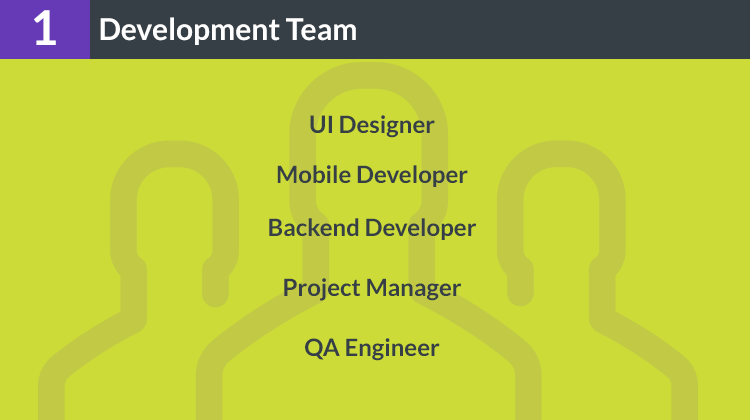
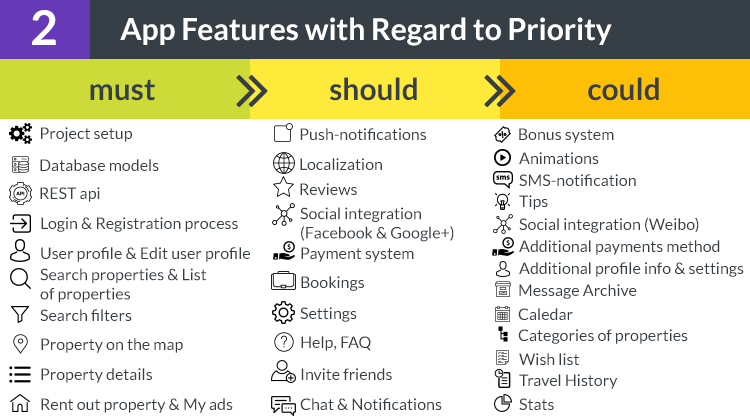
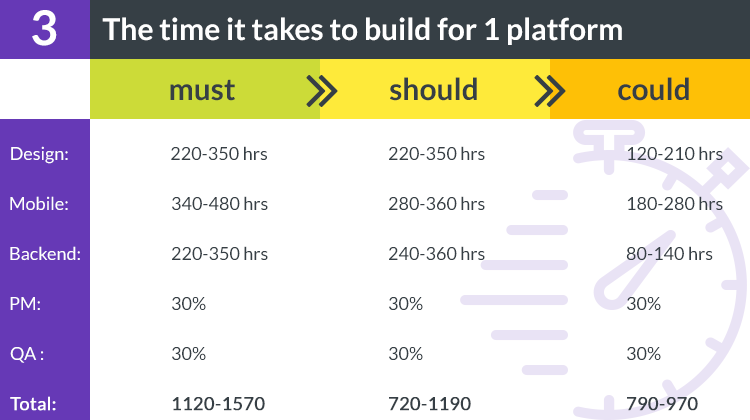
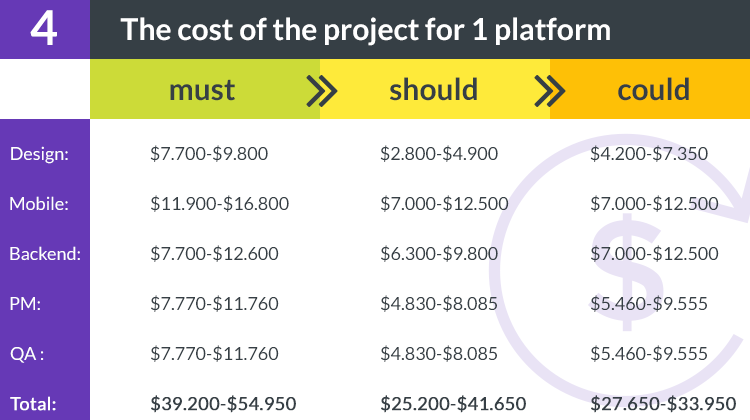
Finally, the cost of the bulk makes $96,320-$156,800.
How to pay less and get what you want
As you see, the cost of development depends on many factors. But if you want to go beyond a table-based application, you will have to fork out. That’s the main hurdle for most startups. Even more mature businesses go for less expensive solutions.
How to make the development process more ‘lean’ without compromising the app’s quality? Here are some tips.
Tip #1: Adopt an existing business model and improve the weakest links
Do not try to reinvent the wheel. A proven business model will reduce your costs of doing an extensive research and business analysis. There’s plenty of data pointing to what worked and what didn’t for Airbnb and their competition, as well as mappings of their markets and existing niches that you can fill in. Instead, focus on creating a unique user experience and invest in UI/UX design.
Derisking the business model canvas has been a common practice with Airbnb. Their user experience improvement has transformed the company from a failing startup into a unicorn. For starters, Airbnb’s original photos of properties were not up to scratch. The company invited freelance photographers to take professional pictures, which greatly enhanced the site’s look and feel. They also incentivised the hosts by providing photo shoots free of charge.
Introducing the ability to ‘review’ the service, when the host and the traveler can rate each other and write reviews based on the experience, has helped to build up trust and attract more clients.
Today travelers care more for unique lifetime experiences than comfort and good service. But of course, the latter should go without saying in an on-demand service. That’s the reason for the company’s hiring Chip Conley, founder of a boutique hotel business, an expert in customer happiness.
Tip #2: Build a cross-platform solution
Opting for a cross-platform development will allow you to save up to 30-40% of development costs.Technology like ReactNative allows you to build mobile applications for both Android and iOS platforms at the same time.
Alternatively, you may start with one platform, then add another. The second platform will cost much less since you already have the backend. We have also excluded the front end developer because there’s a mobile client for browsers.
Tip #3: Develop and test for your target user
So much about development. However, quality assurance is equally important and is not an item to cut down on. Don’t get fooled by the myth that great developers build products without errors. After all, QA is not about finding errors – rather about checking whether your product operates as it should and meets users’ needs.
When building an app, remember to ensure a maximum convenience of users of various:
- browsers
- screen sizes
- mobile devices
- app platforms
To minimize the costs, conduct a preliminary research of your audience’s devices and platforms.
The basic 3F rule in finance says, ‘friends, family, and fools are the people to talk to first when pitching an idea.’ Startups oftentimes apply it to QA by developing a beta-version to be tested by users for free. Though it may sometimes work with early adopters, we wouldn’t recommend going onto the market with a raw product if you care about your customers.
Mobile app QA poses unique challenges and it’s best to work out a testing strategy to produce the best overall testing result, balancing the tradeoffs between cost, quality, and time-to-market.
Tip #4: Start with a minimum viable product. Learn. Then expand
Less is more. Starting with a simple working solution – be it a listing mobile-friendly website or an apartment rental app – will enable you to start a business with little investment and simultaneously test and improve your business idea ‘on-the-go’. Go lean with a minimum feature set that will enable a user to:
- list property
- search for properties (up to 1000 properties)
- see property details
- fill out a form to book the property
Make sure that your product is viable (performs its key function) and functional (works properly) before going onto the market. But avoid adding a lot of more advanced functionality right off – that may never be used.
How to decide what you need? The prioritized list of Airbnb features above will give you a clue. We have marked a minimum viable feature-set as ‘must-haves’ – start with those, then test your product with users and learn from their feedback what else they are looking for. Who knows, you may eventually come up with a better product than Airbnb.
Here’s more on how to build a successful MVP. We are open to discuss other MVP solutions to fit your business.
How much does it cost to build an app like Airbnb with CodeTiburon? Want a detailed estimate?

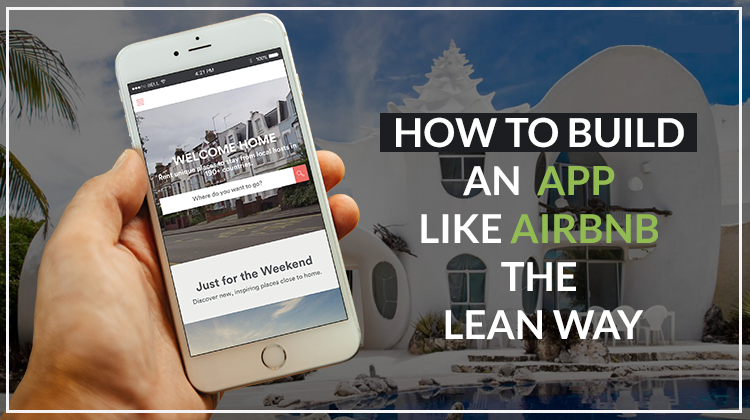
Hey there, wow super blog